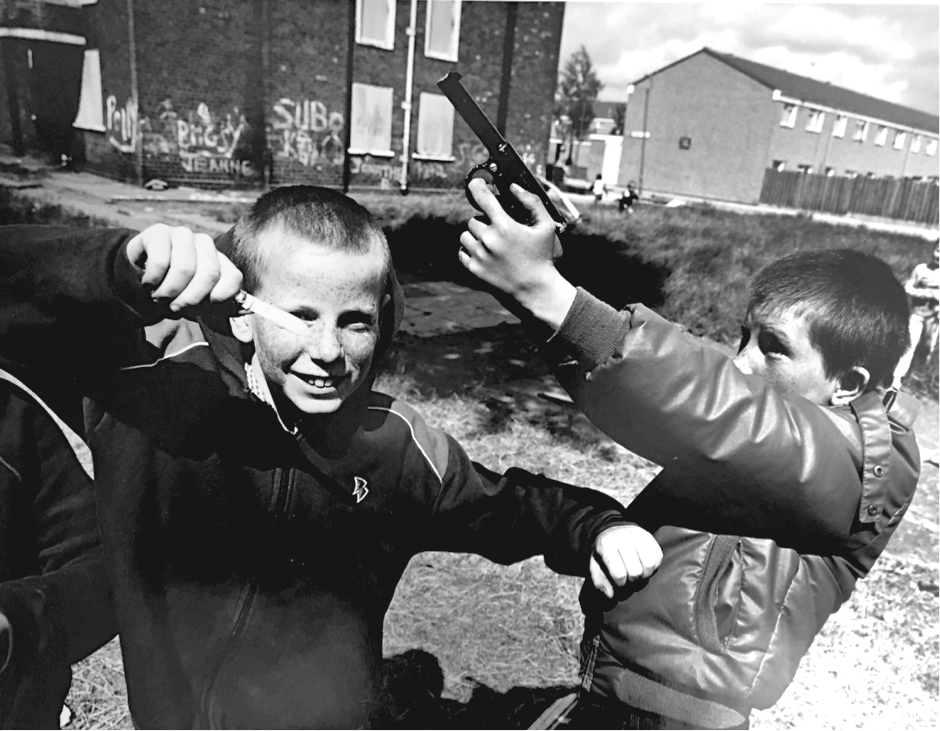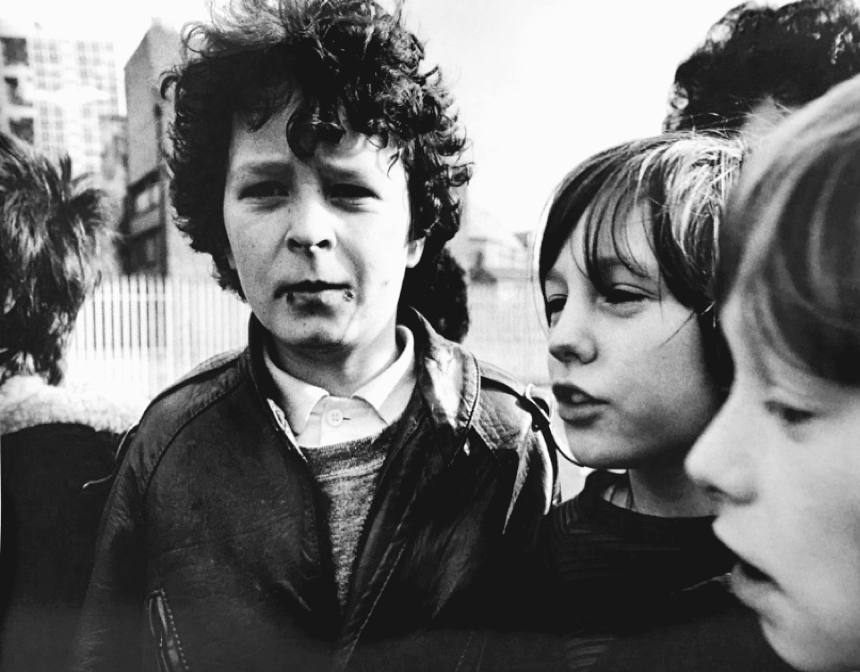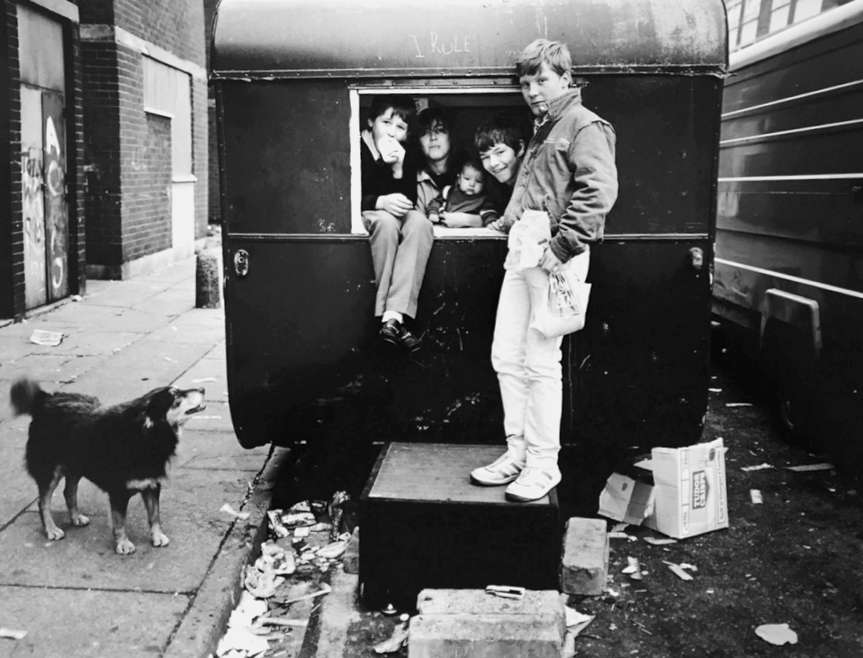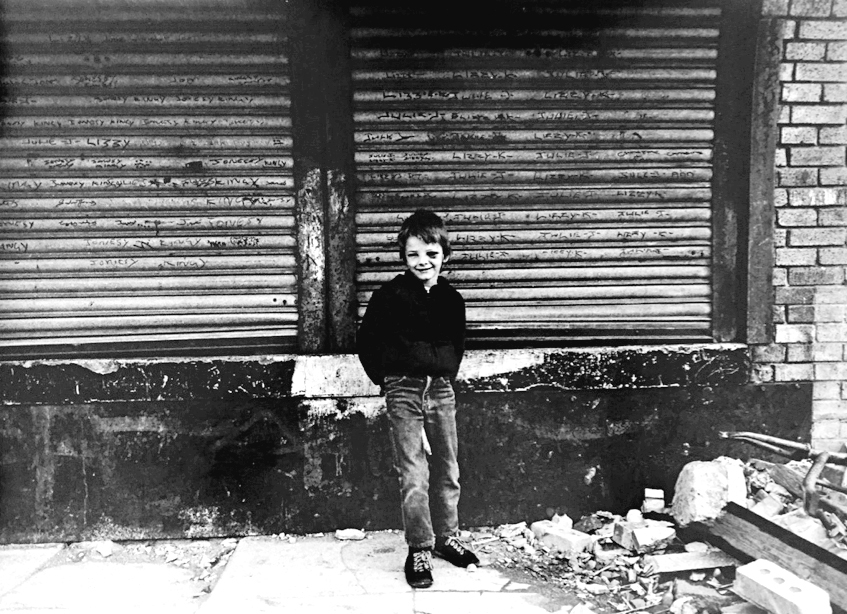




Youthful Spaces
Youthful Spaces
Dan Warner is a 3rd year PhD Researcher and Teacher at the University of Liverpool. Having completed a B.A. in History and an M.A. in Cultural History, his thesis utilises social documentary photography to explore working class culture in British inner cities during the 1970s. Dan completed a placement at Open Eye Gallery in 2015, composing and delivering the Spoken Words and Photographs event during which images from the Gallery’s archive were matched with local oral histories. In the following series of blogs, Dan explores the research conducted, including representations of life in British inner cities at the time and the uses of urban street photography as an historical source. In this blog, Dan explores how John’s photography highlights how local children and adolescents made the most of a rapidly changing and decaying landscape.
—
“Can you imagine walking around taking pictures of kids now? You’d be lynched. I used to get invited into their house and they’d jump around and pull out their knives and air guns, their pigeons and get their dogs outs. They just loved being photographed. And then I’d meet their mum and dad and they’d be like, “Oh, that’s a good idea! Anyway, come on, in for your tea now.” It was completely innocent. It was a different time.” – John Stoddart
That John’s photographs are laced with humanity and individuality seldom present in historical representations of these areas at this time is evident. No clearer does this appear than in the many shots of children amongst the decaying landscape.
For John, these photographs excavate a contradictory mixture of emotions and memories. On the surface they beam with an energetic happiness, but bubbling just underneath there remains a tinge of sadness.
“I’m going on gut reaction here but I just remember them all to be really vibrant, happy kids playing on the streets. I love this one, though I find it quite moving actually. They were brother and sister and she’s holding his hand. You can’t really tell from the print but she was wearing a pink leather dress and he’s got a little bobbly hat on. If you look closely at the photo he looks cold. I remember him being really cold. God knows how she was wearing only that little dress. And you can just see this bloody hovel they had to live in. Despite all that, they seemed really happy.”
While the streets around them fell apart, it appears that children saw only opportunities. The increasingly derelict landscape became the setting for an adventure. Abandoned and deemed useless by the adult world, children reimagined these landscapes as their own territory. In this photograph, taken by John in 1985, a group of friends and a small child tucked away in the middle of the group have adopted an abandoned caravan for play. Pauline, a local mother at the time, remembers childhood acts like this to be a common occurrence.
“My son got up to everything. There’d be an old wrecked car there with kids jumping and playing on it. People used to dump stuff on the wasteland, fly-tipping and stolen cars, but the kids made it into their own little wrecking area. They’d sit inside it and pretend to race. You’d think twice now but years ago they had fun with it. They didn’t see it as a threat. And neither did the neighbours, really. Normally we’d say, “Oh leave them playing in it, they’re doing no harm.” Growing up in the area was good. You felt that your kids were safe.”
On this topic, Pauline remembered one incident in particular involving wrecked and dumped cars:
“There was one car that I can remember in particular. It was an old wreck and the kids were taking pieces off it, taking the seats out, “We’re fixing it, we’re repairing it!” They didn’t see it as a danger, instead they used to say, “Well come on, lets put the headlamps back on it. Let’s put this back together.”
The children’s sense of ownership over these areas is clearly demonstrated when Pauline remembers the their reactions when the council came to take the car away:
“Actually, when the police and the council moved that car all the kids were going mad. “Ahh, no! They’re taking our car!” They thought it was theirs to play with!”
In very few of John’s photographs of local children are adults actually present. Crucially, it seems that this was often a playground bereft of parental or communal observation. Without the surveillance their parents experienced growing up in terraced streets, John’s photographs demonstrate how some children and adolescents used this landscape to their advantage by actively seeking out the nooks and crannies of the failed or failing housing developments. Of course, with the lack of surveillance came the opportunity for mischief.
John remembered this shot particularly well, though there’s much about it that remains tantalizingly unexplained:
“God knows how he got that black eye. He’s got a little bar sticking out between his legs and he looks a bit shy about me taking his picture. He was using that pole to try and get into the disused shop behind him with the corrugated blind down. Yeah, it’s just his little face and you wonder who belted him to give him a big black eye like that. There’s a lot of mystery behind that one.”
Perhaps this point about surveillance is most strikingly illustrated by this photograph of the Radcliffe Estate. A peripheral blur dwarfed by the scale of what’s behind him, this child seems almost perfectly camouflaged against his background. Built in the mid-seventies and demolished less than twenty years after completion, the Radcliffe was jammed between Shaw Street and Everton Road and designed to look like a quaint Cornish fishing village. Its confusing and unusual design became difficult to maintain and the estate was quickly sent into a spiral of decline. Bin lorries, emergency services and even its tenants’ cars struggled to penetrate into this labyrinth.
Proverbially, the same apparently applied to police officers. Instead of becoming a cosy and homely neighbourhood, its maze of dark passages and complicated walkways became locally notorious as a quick and easy escape route. In this context, the fleeting presence of a child running past the estate brings new mysteries. Where he was he running to? Or, perhaps more importantly, what was he running from?

